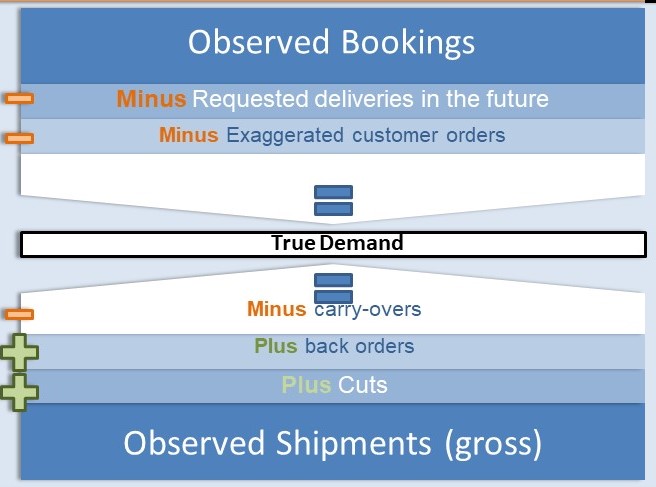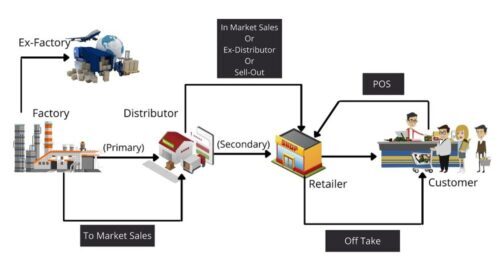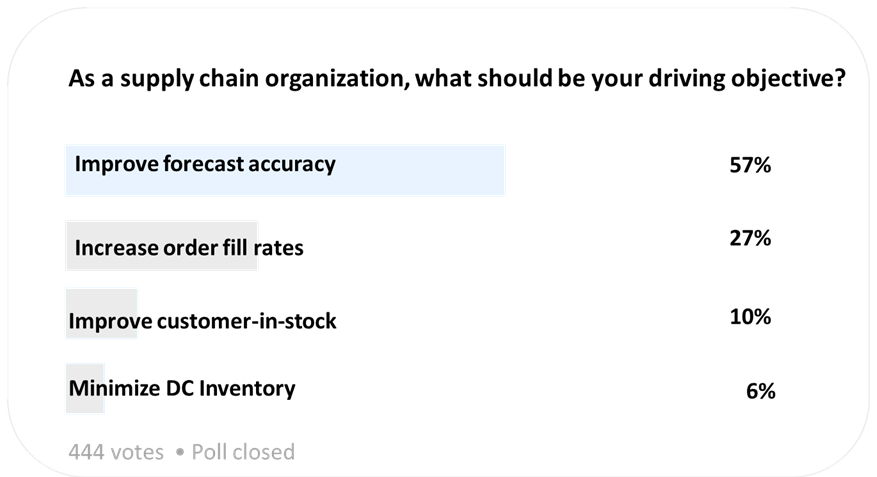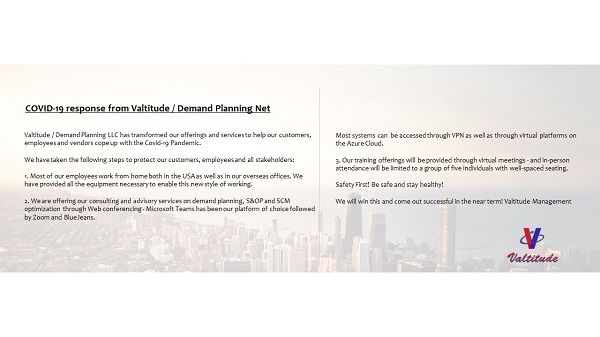The Mystery of Moving Averages
A user in an APO forum lamented:
“I am trying to use the Moving Average option in APO DP but I get a static forecast that remains constant for all the future months based on the history. I would like the statistical forecast to be a moving target not a constant. Not sure how to achieve this?!”
“All I get is the same statistical forecast volume for all 24 months. This is not want we are looking for. The system is giving me a forecast like this: month1 – 915, month2 – 915,… month 24 – 915″
“But I want the system to give me forecast that is different each month:
Future: month1 – 915, month2 – 902,… month 24 – 908.”
Before we go too far with the micro details of these numbers, let us first realize some qualities of a good statistical forecast.
One of the important qualities of a forecast is robustness. Robustness means the forecast does not change like a yo-yo just based on new historical data point.
So the objective is not to mimic the history but to produce a forecast that minimizes the error. Theoretically, Moving averages should produce a constant forecast into the future at least after the first two periods. The idea of the moving average is that it will change by at least one third of the impact of the new observation that is different from the
forecast.
Other than this, let us understand the difference in error in what is being proposed here. A forecast that is 915 each month is off by 1% from another forecast that varies between 902 and 915 over the entire forecast horizon.
A contrived model that looks fancier with oscillations in results between 902 and 915 perhaps can be 1% better on average than another model that proposes to use a constant 915 every month. I don’t think the trade-off to improve forecast quality by 1% is worth the model search to come up with a more complex model that mimics
the history better.
The fact that you are choosing moving average means that the data series is relatively more stable. We as planners should let moving average do its job and move on to more complex items that need your attention – items that
have a persistent trend or seasonality or both.
Trying to fit a holt-winters model when the series begs you for a constant model is NOT a good use of time. Note that SAP APO classifies moving average under constant models. In fact, specifying that you want Holt-Winters models in such a scenario will give you a First Order smoothing model which again gives you constant forecasts into the horizon.
If you want to learn more about error metrics, you may be interested in http://www.demandplanning.net/apoMetrics_webworkshops.htm.









